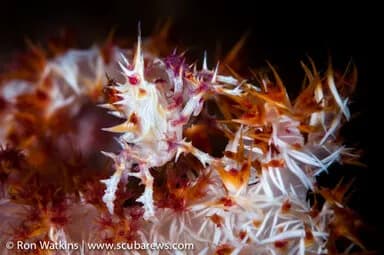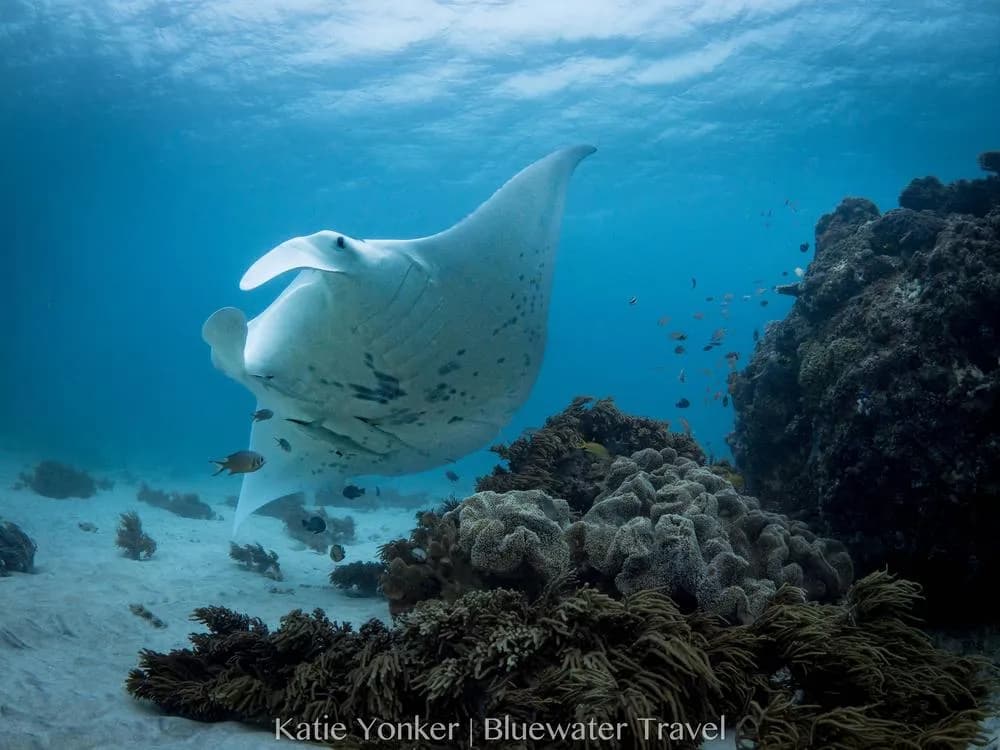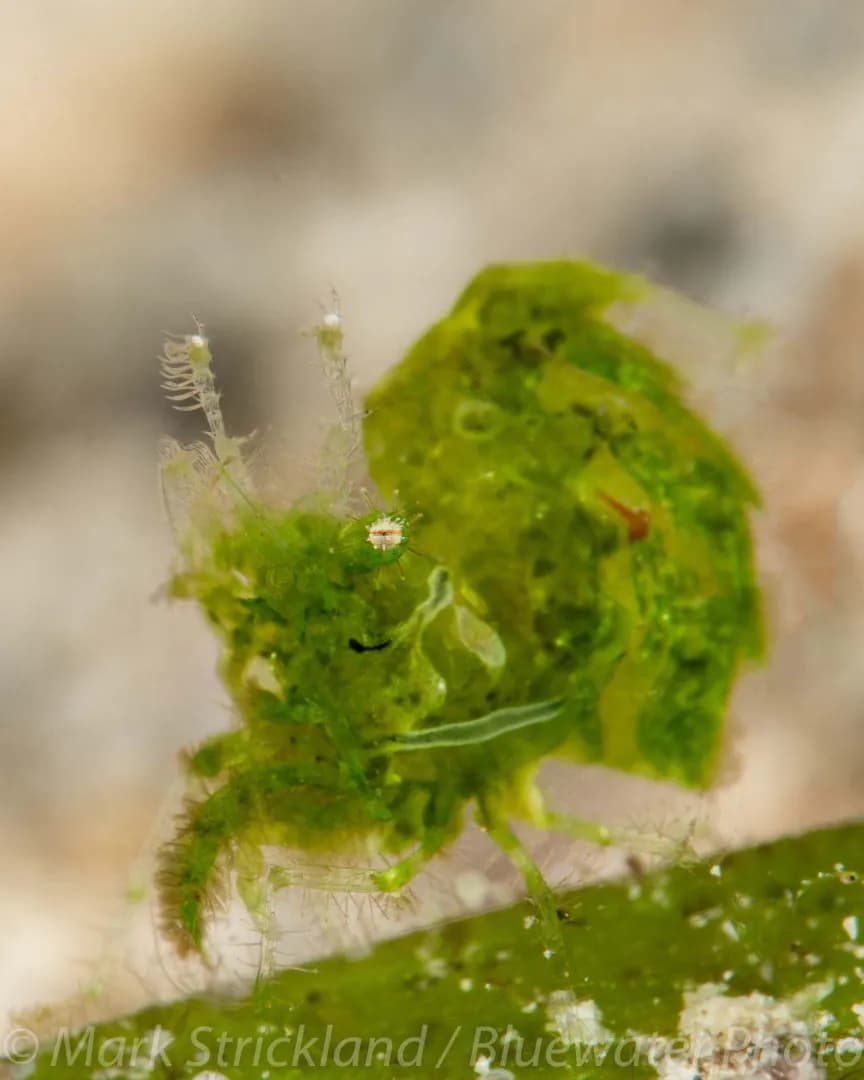Intro To Papua New Guinea
Papua New Guinea is also famous for its indigenous cultures with over 800 languages and for having the largest area of intact rainforest outside the Amazon. If you ever decide to dive the PNG, including a land tour to see the local tribes is a MUST!
There are 28,000 miles (45,000kms) of reef systems, so it's a destination where divers rarely come across other groups. It is home to some of the world's most spectacular scuba diving, with various dive resort and liveaboard options for every diver.
View Location on Google Maps
Diving Information
Papua New Guinea Marine Life & Photography Subjects
Papua New Guinea is located in the "coral triangle" and you can expect to see and photograph an abundance of diverse marine life.
Macro life includes frogfish, pipefish, seahorses, exotic nudibranchs, crabs, shrimp and a plethora of other critters.
Large sea life includes pelagic sharks and fish, turtles, sea snakes, and even marine mammals. Those who like to shoot metal will find a variety of World War II wrecks that include ships, aircraft, and submarines.
See Also: Papua New Guinea Dive Trip Report and Images: Sep/Oct 2018
Best Time To Dive Papua New Guinea
You can scuba dive Papua New Guinea year-round, however, the high season is generally between May and November.
- KImbe Bay is best dived in May and June, and then again from September through December.
- It's almost the same for Kavieng, at the northwest tip of New Ireland. Good diving in this area starts a month earlier, in April, and conditions are great until June. But the best diving is later in the year, from September to early December.
- For Milne Bay, the best time of the year for diving is between October and March, for peak visibility and calm skies.
- Diving in Tufi is at its best between August and November.
- If you're headed toward the dive sites near Port Moresby, such as Loloata Island or Bootless Bay, November to early December is the ideal time to go.
Diving In Papua New Guinea
- Water Temperature: Averages about 79F (26C) along the edge of the Coral Sea and 88F (31C) in the Bismark Sea.
- Visibility: Ranges from 50 to 150 feet
- Weather: The climate in Papua New Guinea is hot and humid throughout the year.
Papua New Guinea's Best Dive Sites
Papua New Guinea offers a wide variety of diving, including vast coral beds, huge walls, wrecks and more. Depending on the site, photographers are encouraged to shoot wide-angle or to keep their eyes on the bottom looking for colorful macro life.
- Kimbe Bay: Located off New Britain Island, Kimbe Bay is celebrated for its rich marine biodiversity and protected status as a Marine Protected Area. National Geographic and renowned photographer David Doubilet have highlighted the bay for its vibrant underwater scenery. Notable dive sites include Father’s Reef and South Emma, where sightings of pelagics like sharks and barracudas are common, and Susan’s Reef, known for its colorful soft corals, sea fans, and stunning wide-angle opportunities.Other top dive sites include a fully intact Japanese Zero fighter plane, and picturesque Rest Orf Island, where the scenery is equally good above and below the surface.
- Witu Islands are also nearby, famous for schooling fish and loads of soft corals as well as unusual critters. While less reliable than the reef dwellers, various marine mammals also make regular appearances in Kimbe Bay, including pilot whales and several species of dolphin; even orcas and sperm whales show up on occasion. May/June and Sept-Dec often offer great diving conditions here.
- Kavieng: Located on the northwest tip of New Ireland, Kavieng is best known for big animals like reef sharks and semi-pelagic fish like Dog-tooth tuna, Spanish mackerel, and barracuda. Its also blessed with excellent soft corals, sponges, and fans, all of which thrive in the often-vigorous currents. There are also some great World War II wrecks. Apr - June, Sept - early December usually offer the best diving conditions.
- Tufi: Forming the northern coast of the main island of New Guinea, the scenery in this region could be described as tropical fiords - gorgeous, lush, green, and very isolated, with no roads leading to it. The diving is a mix of critter diving and great reefs. August - November is generally considered the best season for diving.
- Milne Bay: Encompassing the easternmost point of the huge island of New Guinea, Milne Bay offers some of the best diving in PNG for both ends of the marine life spectrum. On the outside finger of Milne Bay are dramatic walls and dropoffs, which act as a superhighway for passing pelagics certain times of the year. At the mouth of Milne Bay where different seas and currents collide are colorful reefs teeming with fish.
For a premier diving experience in Milne Bay, consider staying at the Tawali Dive Resort, offering access to pristine reefs and comfortable accommodations.
- For macro critters, this region is hard to beat, with an amazing diversity of species, many of which are found in less than 20 ft. depths. In fact, Milne Bay is the original place for muck diving, and helped put PNG on the map for diving.
- That alone would be reason enough to visit, but theres also excellent scenery, including sloping coral reefs, dramatic walls, and isolated pinnacles. There are even some sites, such as Lauadi / Dinahs Beach, where you can see all the above in a single dive!
- Find out why Lauadi/Dinah's Beach has made it onto our list of Top 20 Dive Sites!
- Milne Bay has lots of small critters. Ghost pipefish, flatworms, seahorses, frogfish, cuttlefish, mandarin fish, lots of nudibranchs, etc. You can even see Rhinopia here.
Manta Ray encounter at Gunabalabla, one of the best dive sites to find manta rays in Milne Bay. Taken by Bluewater Trip Leader Katie Yonker while diving Papua New Guinea in 2018
- Bootless Bay:Easily accessed from the capital of Port Moresby, this area offers a welcome escape from the city, as well as some superb diving. Depending on the site, this area offers a bit of everything, from prolific fish life, thriving corals, rare species like Rhinopias scorpionfish, and even big fish like Napolean wrasse and reef sharks. About the only thing lacking here is a chance to visit remote villages, but aside from that, it compares very well to PNGs other top dive areas.
- New Hanover: Accessible only by liveaboards, the marine area is pristine and seems untouched and offers great opportunities for wreck diving. Explore the Sanko Maru, a shipwreck that has become a thriving artificial reef, or the small Japanese submarine nearby.
Travel Information
How to Get there
International flights arrive at Jacksons International Airport (POM) from several Asian and Australian hubs, such as Singapore (SIN), Brisbane (BNE), Sydney (SYD), and Melbourne (MEL). The airport is right next to Port Moresby, which makes transfers to liveaboards easy.
Domestic flights also leave POM for other parts of the country, operated by Air Niugini, Airlines PNG, and QantasLink. A good tip is to fly into Papua New Guinea on the same carrier being used for any domestic flights, as the airlines will then allow higher baggage weight restrictions.
Note that domestic flights in Papua New Guinea are unreliable, so we recommend booking your domestic flights on the same ticket as your international flights; this way the airline will assist with accommodation if there are flight disruptions. If you book separate tickets, you may have to find your own accommodation. Travel insurance is strongly recommended.
How To Dive Papua New Guinea
Papua New Guinea is a place where resorts and liveaboards are both great options.Liveaboards are a great option for exploring many areas during a week-long trip. Resorts allow divers relaxation on land along with a wide variety of local dive sites.
Papua New Guinea also has its own hyperbaric chamber and top notch dive facilities, with many catering to underwater photographers.
One can expect to be in the water 4 or 5 times a day on a liveaboard. Land-based dive operations will generally offer about 3 dives per day and most dive sites are within a 30-minute boat ride from the resorts.
Other Things To Do In Papua New Guinea
There is more than just scuba diving in Papua New Guinea. There is a long list of things to do while visiting the country. Many travelers flock into the country to surf, hike, fish, bird watch, kayak, snorkel and explore the indigenous culture. It's easy to spend some time doing any of these activities before or after the dive portion of your trip.
We highly recommend including a land visit to see the local tribes on your dive trip. The experience is simply amazing!
On liveaboards you're pretty limited to diving and snorkeling, however, you can always book an add-on after your liveaboard trip. Land-based resorts offer many of these activities to complement your dive schedule. These are also great activities for non-diving travel companions while you're out on the ocean.
Other Useful Information
Practical Information
- Currency: Papua New Guinean Kina (PGK)
- Language: The official languages are Tok Pisin, English and Hiri Motu
- Time Zone: UTC+10
- Electricity: 240 V 50 Hz
- Visa: Visas must be obtained online in advance and can take up to three weeks, so apply early. See the latest information here. Australian visitors are required to apply for a 30-day permit while other nationals may only apply for a 60-day permit.
- Health: PNG is a high-risk malaria area, so be sure to take anti-malaria pills, and check with your doctor or the CDC beforehand to be sure that you have the best drug for the specific area youre visiting. Also, remember that even the
- best anti-malaria pills do not always work, so be sure to cover up and use insect repellent when ashore, especially around dawn and dusk.
- Safety: As in all international travel, but especially in PNG, you need to be aware of your surroundingsdont go places without a guide or a big strong person who can speak the local language. Some areas are very, very remote if you are trekking, but perhaps the most dangerous location is Port Moresbyleaving your hotel on foot here is not advisable. In general over-nights in the capital are best avoided, but if you must, there is safe access to the Airways Hotel, a mere 2-minute complimentary shuttle ride from the airport.



